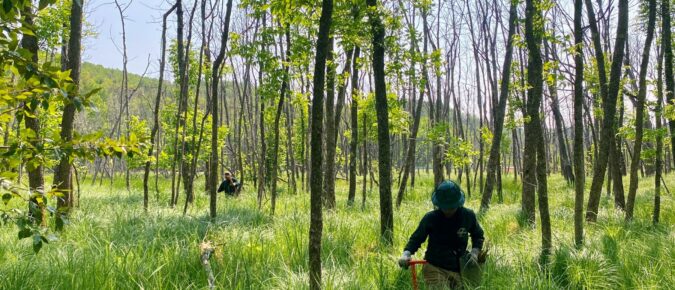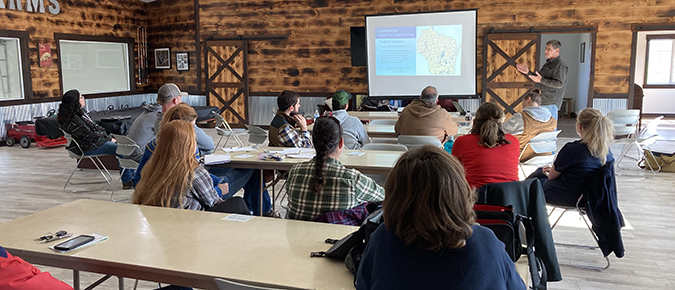New rules governing field manure applications, Wisconsin Administrative Codes ATCP 50 and NR 151, depend on depth-to-bedrock measures. To apply those rules, depth-to-bedrock maps created in the 1970s are currently used over much of the Silurian dolomite in eastern Wisconsin. However, these maps show depth to bedrock at a coarse scale and do not use […]
Research has shown that autistic students choose STEM majors at a much higher rate than neurotypical students, yet college attendance rates for autistic youth are much lower than expected. Recommendations for easing the transition of autistic youth to college include experiential learning opportunities, specialized teaching strategies, STEM career exposure, and social skills development. To address […]
For over 25 years, the Water Action Volunteers program (WAV) has provided free training and equipment for volunteer stream monitors and local partners across Wisconsin who are interested in monitoring the water quality of wadeable streams and rivers in their local watershed. WAV empowers interested youth and adults to become stewards of their local waters […]
Black ash trees are abundant along the St. Louis River Estuary and the Lake Superior coast. After the non-native emerald ash borer reached the region in 2013, these trees and the habitat they provide may be lost. When cover provided by black ash trees begins to decline, invasive shrubs growing in the understory are poised […]
Over the past decade there has been a need to better understand how decision makers in western Lake Superior orient their roles to issues and challenges that arise, which would provide needed resources and learning opportunities. UW–Madison Extension’s Lake Superior National Estuarine Research Reserve Coastal Training Program (CTP) aims to provide decision makers with opportunities […]
Outdoor spaces provide many benefits, including increased life satisfaction and improved physical and mental health. However, many individuals with disabilities experience barriers to accessing outdoor spaces and programming. Since 1941, Upham Woods Outdoor Learning Center has provided young people with educational opportunities focused on environmental and leadership education. In 2022, UW–Madison Extension worked with 18 […]
Private landowners are uniquely positioned to shape the future of Wisconsin’s forests — they own nearly 60% of the state’s forestland. However, relatively few landowners seek management assistance, leaving many acres unmanaged. UW–Madison Extension’s Wisconsin Coverts Project is a free woodland management program for private landowners, which provides landowners with training and resources to manage […]
Critical minerals are an important research topic given their use in the development of batteries and electric vehicles. As a result, it is vital that researchers can examine geological samples easily and without having to repeatedly travel to and from an onsite repository. Part of UW–Madison Extension, the Wisconsin Geological and Natural History Survey (WGNHS) […]
Most states in the U.S. have maps of the surficial geology, the unconsolidated sediments at the earth’s surface. These maps are at a scale that is appropriate to depicting the entire state on a single map. To date, no such map has ever been created for Wisconsin. Extension’s Wisconsin Geological and Natural History Survey has […]
Wisconsin dairy farms produce the equivalent of 12 billion gallons of dairy manure every year. Properly managed, this manure is a valuable source of crop nutrients. However, improperly managed manure can release nitrogen, phosphorus, and pathogens into surface water and drinking water supplies. Every year, seven billion gallons of manure are transported and/or applied by […]














